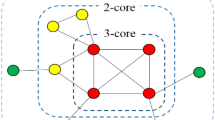Abstract
The Japanese model of long-term collaborative supplier partnerships has attracted much attention in recent years from business researchers and practitioners alike (Womack et al., 1990; Dyer and Ouchi, 1993). Several American and European vehicle-makers have attempted to emulate this model, drastically reducing their supplier base and moving toward more collaborative relationships with their best suppliers (Nishiguchi, 1994; Helper and Sako, 1995; Dyer, 1996a). As a result, early involvement of suppliers in product development and solicitation of suppliers’ suggestions for cost reduction are rapidly becoming standard practices in the automotive industry and beyond, along with several other Japanese manufacturing practices (Womack and Jones, 1996).
The authors wish to thank Yaichi Aoshima, Jonathan Brookfield, Michael A. Cusumano, Takahiro Fujimoto, Susan Helper, Dany Jacobs, Ken Kusunoki, Jens Laage-Hellman, Tom Roehl, Mari Sako, Annique Un, Eleanor Westney, and Lin Xu for their valuable comments on the present and/or earlier versions of this paper, as well as the Japan Automobile Manufacturers’ Association, the Japan Auto Parts Industries’ Association, the Institute for International Economic Studies, the International Motor Vehicle Program at Massachusetts Institute of Technology, the Sasakawa Peace Foundation, Hitotsubashi University’s Institute for Innovation Research, and the Ministry of Education, Science, Sports and Culture for the various support received for our research. The usual disclaimer applies.
Access this chapter
Tax calculation will be finalised at checkout
Purchases are for personal use only
Preview
Unable to display preview. Download preview PDF.
Similar content being viewed by others
References
ADLER, P. S. and R. E. COLE (1995) ‘Designed for Learning: A Tale of Two Auto Plants’, in A. Sandberg (ed.), Enriching Production: Perspectives on Volvo’s Uddevalla Plant as an Alternative to Lean Production (Aldershot: Avebury).
BEAUDET, A. (1998) Knowledge Diffusion in the Japanese Auto-motive Industry: The Role of Kyoryokukai and Jishuken, Unpublished Masters Thesis, Graduate School of Economics, Hitotsubashi University.
Business Week (1997) ‘Toyota’s Crusade’, 7 April, pp. 44–50.
Detroit News (1998) ‘Honda Changes Part Operations’, 24 March, p. H-04.
DYER, J. H. (1996a) ‘How Chrysler Created and American Keiretsu’, Harvard Business Review (July–August).
DYER, J. H. (1996b) ‘Specialized Supplier Networks as a Source of Competitive Advantage: Evidence from the Auto Industry’, Strategic Management Journal, 17(1):271–91.
DYER, J. H. and W. G. OUCHI (1993) ‘Japanese-Style Partnerships: Giving Companies a Competitive Edge’, Sloan Management Review, 35(Fall):512–63.
FUJIMOTO, T. (1997) Seisan shisutemu no shinkaron: Toyota jidosha ni miru soshiki noryoku to sohatsu purosesu [The Evolution of a Production System: Organizational Capabilities and Emergence Process at Toyota Motor] (Tokyo: Yukihaku).
GLEICK, J. (1987) Chaos: Making a New Science (New York: Viking Penguin).
HELPER, S. R. and M. SAKO (1995) ‘Supplier Relations in Japan and the United States: Are They Converging?’, Sloan Management Review, 36(3):77–84.
KOGUT, B. and U. ZANDER (1992) ‘Knowledge of the Firm, Combinative Capabilities, and the Replication of Technology’, Organization Science, 3:383–97.
MANDELBROT, B. B. (1977) Fractals: Form, Chance, and Dimension (San Francisco: Freeman).
MANDELBROT, B. B. (1983) The Fractal Geometry of Nature (New York: Freeman).
NISHIGUCHI, T. (1987) ‘Competing Systems of Automotive Components Supply: An Examination of the Japanese “Clustered Control” Model and the “Alps” Structure’, working Paper, International Motor Vehicle Programme.
NISHIGUCHI, T. (1994) Strategic Industrial Sourcing: the Japanese Advantage (New York: Oxford University Press).
NISHIGUCHI, T. (1998) ‘Coevolution of Interorganizational Relations’, in I. Nonaka and T. Nishiguchi (eds), Knowledge Emergence (New York: Oxford University Press).
NISHIGUCHI, T. and E. ANDERSON (1994) ‘Supplier and Buyer Networks’, in E. H. Bowman and B. M. Kogut (eds), Redesigning the Firm (New York: Oxford University Press).
NISHIGUCHI, T. and J. BROOKFIELD (1997) ‘The Evolution of Japanese Subcontracting’, Sloan Management Review, 38(Fall):89–101.
NOMURA, M. (1993) Toyotism — nihon gata seisan shisutemu no seijyuku to henyo [Toyotism: Maturity and Change in the Japanese Production System] (Tokyo: Minerva).
NONAKA, I. (1991) ‘The Knowledge-Creating Company’, Harvard Business Review, (November–December): 96–104.
NONAKA, I. and H. TAKEUCHI (1995) The Knowledge-Creating Company: How Japanese Companies Create the Dynamics of Innovation (New York: Oxford University Press).
OLIVER, N. D, T. JONES, R. DELBRIDGE, J. LOWE, P. ROBERTS and B. THAYER (1994) Worldwide Manufacturing Competitiveness Study: The Second Lean Enterprise Report (London: Andersen Consulting).
RICHARDSON, J. (1993) ‘Parallel Sourcing and Supplier Performance in the Japanese Automobile Industry’, Strategic Management Journal 14:339–50.
SAKO, M. (1991) ‘The Role of “Trust” in Japanese Buyer-Supplier Relationships’, Ricerche Economiche, 65:449–74.
SAKO, M. (1996) ‘Suppliers’ Associations in the Japanese Automobile Industry: Collective Action for Technology Diffusion’, Cambridge Journal of Economics, 20:651–71.
STEWART, P. (ed.) (1996) Beyond Japanese Management: The End of Modern Times (London: Frank Cass).
ULRICH, H. and G. J. B. PROBST (eds) (1984). Self-Organization and Management of Social Systems (Berlin: Springer-Verlag).
WADA, K. (1984) ‘“Junsuich oku togo gata soshiki” nó Keisei: Toyota nó jirei’ (‘The Formation of “Quasi-Vertical Integrated Organizations”: The Case of Toyota’), Academia, 83(June):61–98.
Wall Street Journal (1997) ‘To The Rescue: Toyota’s Fast Rebound After Fire at Supplier Shows Why It Is Tough’, 8 May, pp. A1 and A16.
WOMACK, J. P. and D. T. JONES (1996) Lean Thinking: Banish Waste and Create Wealth in Your Corporation (New York: Simon & Schuster).
WOMACK, J. P., D. T. JONES and D ROOS (1990) The Machine that Changed the World (New York: Rawson Associates).
Editor information
Editors and Affiliations
Copyright information
© 2000 Toshihiro Nishiguchi and Alexandre Beaudet
About this chapter
Cite this chapter
Nishiguchi, T., Beaudet, A. (2000). Fractal Design: Self-organizing Links in Supply Chain Management. In: von Krogh, G., Nonaka, I., Nishiguchi, T. (eds) Knowledge Creation. Palgrave Macmillan, London. https://doi.org/10.1007/978-1-349-62753-0_8
Download citation
DOI: https://doi.org/10.1007/978-1-349-62753-0_8
Publisher Name: Palgrave Macmillan, London
Print ISBN: 978-1-349-62755-4
Online ISBN: 978-1-349-62753-0
eBook Packages: Palgrave History CollectionHistory (R0)




